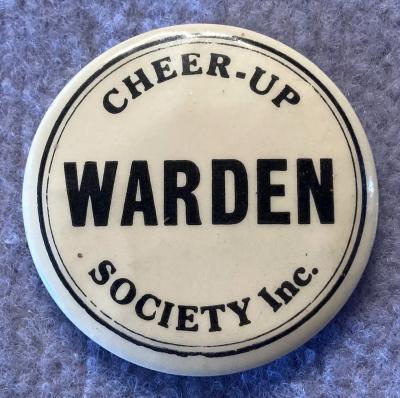WWI identity disc made from a coin for Private William Keable
c. 1916Identity disc made from a silver Egyptian or Ottoman Empire 10 Qirsh coin for Australian soldier, Private William Keable, during World War One.
One side of the coin has been erased and then impressed with his details - his name, service number (2250), Battalion (3rd Australian Infantry) and religious denomination (Church of England).
The reverse of the coin retains its original design, which includes a central tughra indicating the name of the Sultan. A series of seven stars appear in an arc at the top of the coin, while below is a wreath of foliage containing a central pair of crossed quivers.
The maker's mark, a letter 'H' (Heaton and Sons of Birmingham, United Kingdom) is under that.
The edge of the coin is reeded.
A small hole has been drilled through the coin to allow for a chain to be threaded for suspension. The placement of the hole has not taken into account the correct orientation of the coin, nor is it central to the name and details on the other side.
William Keable was born in Norwood, London, on 29 February 1896. He appears to have made his way to Australia as a teenager, and was apprenticed to the engineering business of George Foster & Sons of St Peters, Sydney for 4 years.
He enlisted in Sydney, aged 19 years and 5 months, with the 4th Reinforcements, 18th Battalion A.I.F., on 27 July 1915. He required written consent from his mother to do so.
He embarked from Sydney on board HMAT A8 Argyllshire on 30 September 1915.
He was transferred to the 3rd Battalion on 19 February 1916 in Tel-el-Kebir and embarked from Alexandria to Marseilles on 22 March 1916. He was severely wounded at Pozieres on 22 July 1916, receiving a gunshot wound to his face and shoulder. He lost an eye as a result of this.
He was transferred from the 44th Casualty Clearing Station to the 3rd London Hospital (Wandsworth) and then eventually sent home to Australia by hospital ship. He was medically discharged on 31 August 1916.
Even with these injuries, he was keen to do his part, so re-enlisted, before again being discharged.
He then volunteered with the Mascot Influenza Depot, where he ultimately contracted influenza and died on 17 May 1919, aged 23.
Based on his service record, it was made and purchased between February and March 1916,
The coin was manufactured during the reign of Sultan Mehmed V, 1909-1918, by Heaton & Sons of Birmingham, UK. However, the identity disc would have been made in Egypt by a local vendor providing souvenirs to the visiting soldiers, and personalised in this case for William Keable. Based on his service record, it was made and purchased between February and March 1916,
Details
Details
On erased side of coin:
"W. KEABLE
2250
D
3 A.I. C.E."
More items like this
Other items from Recollections of War
- Cheer-Up Society Warden's badge
- Royal Aero Club of N.S.W. car badge mounted on timber plaque
- The Royal Aero Club of New South Wales drink coaster
- 1927 Australian Florin coin made into pendant
- A.I.F. Memorial fundraising pin - silver
- A.I.F. Memorial fundraising pin - gold
- A.I.F. Memorial fundraising badge - gilt and enamel
- Essendon Aerodrome membership badge
- De Havilland Aircraft Co. Ltd. lapel badge
- Hawker Siddeley Aircraft Company Ltd. War Worker's lapel pin
- Boxed metal and enamel R.A.A.F. sweetheart badge
- Boxed Short Brothers plane fundraising brooch
Scan this QR code to open this page on your phone ->

